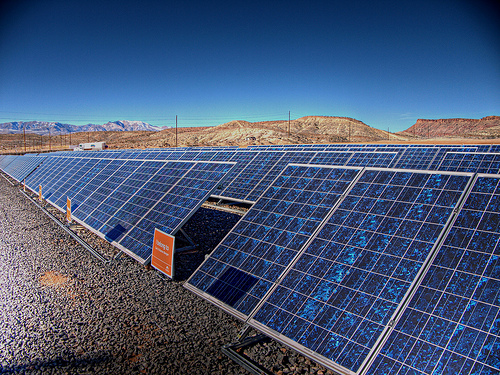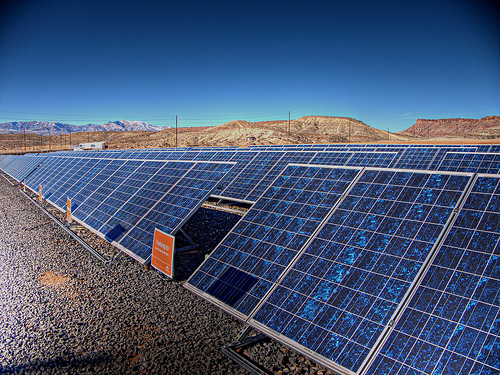 Financing big solar farms could get harder if a Treasury grant program is allowed to expire.Photo: Carl BergerUnless Congress acts over the next four weeks, at the stroke of midnight on Dec. 31, renewable energy advocates will bid auld lang syne to a federal cash grant program that covers 30 percent of the cost of building big solar and wind projects.
Financing big solar farms could get harder if a Treasury grant program is allowed to expire.Photo: Carl BergerUnless Congress acts over the next four weeks, at the stroke of midnight on Dec. 31, renewable energy advocates will bid auld lang syne to a federal cash grant program that covers 30 percent of the cost of building big solar and wind projects.
“It’s absolutely critical that during the lame duck session that Congress extend this program and give support and consistency to those companies who are investing in the solar industry so that they continue to be able to grow,” Rhone Resch, president of the Solar Energy Industries Association, a trade group, said recently during a conference call. “A two-year expansion of the program will create 65,000 additional new jobs in United States.”
The so-called Treasury grant Section 1603 program was enacted as part of the stimulus package in 2009 and gives renewable energy developers the option of taking an existing 30 percent investment tax credit in the form of cash.
The cash option proved crucial. Although the investment tax credit does not expire until the end of 2016, few green energy companies are rolling in revenues, and thus have no taxes to offset with the credit.
In years past, they would sell those credits to what are known as tax equity investors in exchange for cash to build their projects. But the tax equity market collapsed along with the rest of the economy during the Great Recession. And so the ability to take the credit in cash makes it easier for developers to secure financing for everything from residential rooftop photovoltaic projects to multibillion-dollar solar thermal farms.
“We’re not looking for permanency for this program,” Resch said. “We’re looking for two more years, as that’s the time we think we need for tax equity markets to come back.”
Edward Fenster, chief executive of SunRun, a San Francisco startup that finances rooftop solar systems, said on the call that such a two-year extension would likely allow his company to create 6,000 jobs and install 36,000 additional photovoltaic arrays for homeowners.
“The lower cost of capital we’re able to obtain allows us to charge customers three cents a kilowatt-hour less,” he noted. “This savings is enough to more than double our customer base.”
The looming expiration of the Treasury program has driven California and federal regulators to approve seven massive solar energy power plants over the past three months so their developers could cash in on the cash grant program and obtain financing. Those projects are considered crucial to meeting renewable energy mandates and fighting climate change.
For instance, NRG Energy has agreed to invest $300 million in BrightSource Energy’s 370-megawatt Ivanpah project now under construction in the Southern California desert.
But when NRG chief executive David Crane made the Ivanpah announcement, he noted that the end of the cash grant program would make such investments rarer. “I think we’re going to see a burst of projects over the next two months and then you’re going to hear the sounds of silence for quite a while.”



